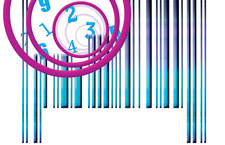A Perl script catalogs books and CDs with the help of barcodes
Checkout

Barcodes efficiently speed us through supermarket checkout lines, but the technology is also useful for totally different applications. An inexpensive barcode scanner can help you organize your private library, CD, or DVD collection.
Dealextreme.com, a company from Hong Kong, offers all kinds of inexpensive goodies. Customers can pay with PayPal, and shipping is free. Interested in a laser pointer for less than two dollars or a SATA/IDE adapter for just eight dollars? If you don't mind waiting up to two weeks for delivery, you're guaranteed to find a bargain with Dealextreme.
For quite a while I had my eye on the CCD-based barcode scanner for US$ 42 dollars (see Figure 1) (one of Dealextreme's most expensive products [2]) before I finally pressed the Buy button.
Mail from Hong Kong
When the mailman finally delivered the package, I could hardly wait to get started. The obvious choice was to write an application to scan the barcodes in my extensive collection of technical literature and store the results in a database. Depending on where the book comes from, the barcodes are either printed in UPC (Universal Product Number) or EAN (European Article Number) format, and Amazon.com offers a free web service that gives you detailed product information if you submit either barcode. This means that a Perl script can easily identify the author and title of a book or the artist for a CD that you scan. The data returned by the service includes CD and book cover images. Adding a graphical user interface to the application lets me display the book cover or CD case onscreen and in color after scanning.
[...]
Buy this article as PDF
(incl. VAT)
Buy Linux Magazine
Subscribe to our Linux Newsletters
Find Linux and Open Source Jobs
Subscribe to our ADMIN Newsletters
Support Our Work
Linux Magazine content is made possible with support from readers like you. Please consider contributing when you’ve found an article to be beneficial.

News
-
OpenMandriva Lx 6.0 Available for Installation
The latest release of OpenMandriva has arrived with a new kernel, an updated Plasma desktop, and a server edition.
-
TrueNAS 25.04 Arrives with Thousands of Changes
One of the most popular Linux-based NAS solutions has rolled out the latest edition, based on Ubuntu 25.04.
-
Fedora 42 Available with Two New Spins
The latest release from the Fedora Project includes the usual updates, a new kernel, an official KDE Plasma spin, and a new System76 spin.
-
So Long, ArcoLinux
The ArcoLinux distribution is the latest Linux distribution to shut down.
-
What Open Source Pros Look for in a Job Role
Learn what professionals in technical and non-technical roles say is most important when seeking a new position.
-
Asahi Linux Runs into Issues with M4 Support
Due to Apple Silicon changes, the Asahi Linux project is at odds with adding support for the M4 chips.
-
Plasma 6.3.4 Now Available
Although not a major release, Plasma 6.3.4 does fix some bugs and offer a subtle change for the Plasma sidebar.
-
Linux Kernel 6.15 First Release Candidate Now Available
Linux Torvalds has announced that the release candidate for the final release of the Linux 6.15 series is now available.
-
Akamai Will Host kernel.org
The organization dedicated to cloud-based solutions has agreed to host kernel.org to deliver long-term stability for the development team.
-
Linux Kernel 6.14 Released
The latest Linux kernel has arrived with extra Rust support and more.

